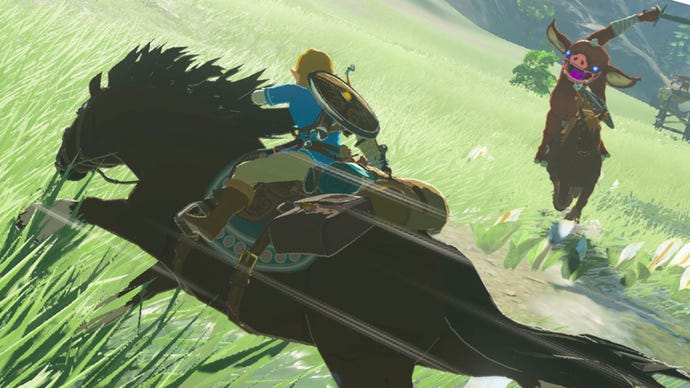Why does The Legend of Zelda: Breath of the Wild run more smoothly when the Switch is in portable mode?
The Legend of Zelda: Breath of the Wild is finally here, and the full retail Switch build has some surprising performance issues.
The Legend of Zelda: Breath of the Wild is great (nobody is saying anything else), but now that we're a few days on let's all take a deep breath and talk calmly about a minor niggle.
As reported well before release, The Legend of Zelda: Breath of the Wild runs at a higher resolution when docked, as you'd expect. But where early builds showed remarkably smooth performance in both docked and portable mode, the final release exhibits noticeable stuttering in docked mode.
You read that right - it performs better in portable mode than when docked. Eurogamer's Digital Foundry took a close look at this baffling discrepancy in The Legend of Zelda: Breath of the Wild's performance, and theorises the root cause may be the comparatively small jump in memory buffer size when you dock the Switch.
See, the docked and portable Switch have identical CPU resources, but when you dock the console it can draw on a deeper pool of GPU clocks. But to make the most of this, the Switch needs to use more memory - and docking only provides a little more breathing room in that regard. (Since the stutter in The Legend of Zelda: Breath of the Wild is so here-and-gone-again, it's almost certainly not GPU related, apparently.)
Apart from the stutter, which is minor if noticeable, the full report linked above (or the video, if you prefer) praises The Legend of Zelda: Breath of the Wild for how little difference there is between portable and docked modes. The big differentiator is texture filtering, which you're hardly going to notice on the 6.2" screen. Dive in for all the technical nitty gritties while we go have a lie down in the dark.

















